Imaging Techniques for Non-Destructive Disease Detection
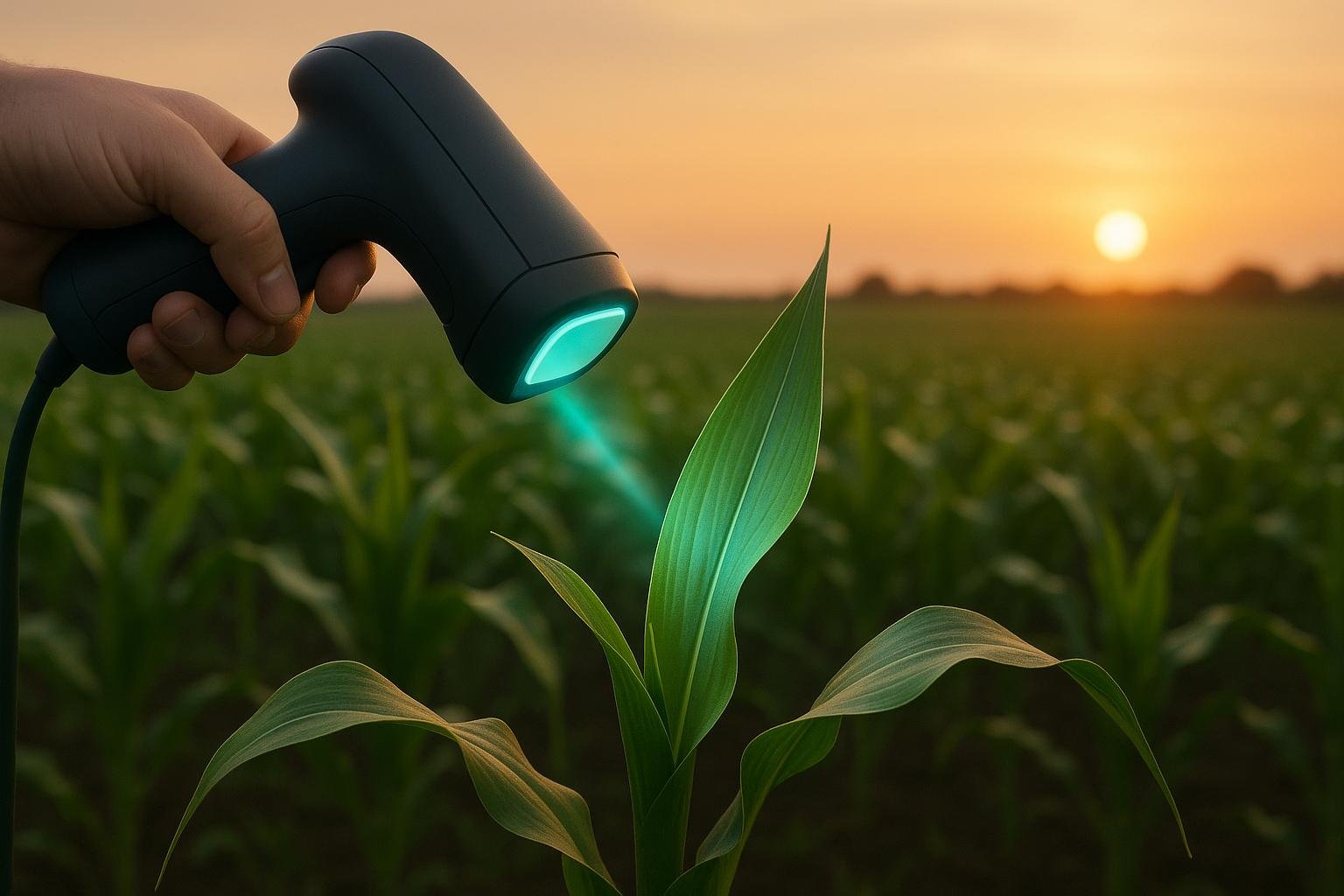
Non-destructive imaging is transforming how plant diseases are detected, offering faster, safer, and more efficient methods compared to older techniques. These imaging tools allow farmers to identify diseases early, often before visible symptoms appear, saving crops and reducing losses. Here's a quick overview of the main methods:
- Hyperspectral Imaging: Highly detailed but expensive, best for controlled environments like greenhouses.
- RGB Imaging: Affordable and simple, using standard cameras or smartphones for basic monitoring.
- Thermal Imaging: Tracks temperature changes to detect stress, useful for drought-related issues.
- Multispectral Imaging: Balances cost and detail, ideal for field use and drone applications.
- AI Integration: Boosts accuracy and speeds up disease detection, even enabling real-time analysis.
Each method has its strengths and limitations, depending on factors like budget, environment, and disease type. Together with AI and smart sensors, these technologies are shaping a future where disease detection is faster, more precise, and accessible to both farmers and gardeners.
Detecting Plant Diseases Earlier Using Hyperspectral Imaging

Advanced Imaging Technologies for Disease Detection
Modern imaging tools have completely changed how we detect plant diseases without harming crops. These cutting-edge technologies can spot problems that are invisible to the naked eye, often weeks before symptoms become noticeable. This section explores some of the key imaging techniques that are reshaping plant health monitoring. Each method strikes a balance between accuracy, cost, and usability, offering tailored solutions for early disease detection.
Hyperspectral Imaging
Hyperspectral imaging is one of the most advanced tools available today. It collects data across the electromagnetic spectrum, creating a unique spectral fingerprint for each pixel in an image. This allows researchers to identify materials and biological processes with incredible accuracy [5].
With a range spanning from 350 to 2,500 nm and sub-nanometer resolution, hyperspectral imaging captures detailed data. For example, the visible spectrum (400–700 nm) highlights leaf pigment absorption, while the near-infrared (700–1,000 nm) and short-wave infrared (1,000–2,500 nm) ranges reveal molecular activity through distinct absorption patterns [3].
In controlled greenhouse studies, this technology has achieved over 90% accuracy in detecting five different wheat foliar diseases [7]. It's also been used to identify pathogens like Phytophthora infestans and Alternaria solani in potatoes and Sclerotium rolfsii in peanuts, with accuracy rates exceeding 80% [7]. Unlike traditional spectral tools, hyperspectral imaging provides additional insights, such as shape, gradient, and color details [6], giving researchers a more comprehensive view of plant health.
RGB Imaging
RGB imaging is the simplest and most accessible way to monitor plant health. By capturing images using red, green, and blue wavelengths, this method detects visual changes like color and pattern shifts in leaves [4].
Its biggest advantage is its affordability and ease of use. Farmers can rely on standard digital cameras or even smartphone apps for routine crop monitoring. However, because RGB imaging only captures visible light, it lacks the ability to detect issues beyond the human visual spectrum [3]. Despite these limitations, it remains a valuable entry point for disease detection. When paired with artificial intelligence, even basic RGB cameras can effectively identify common plant diseases.
Thermal and Multispectral Imaging
Thermal imaging adds a new layer to plant health analysis by detecting infrared radiation, which reveals temperature changes linked to moisture levels and physiological stress [4]. This makes it possible to identify pre-symptomatic temperature shifts caused by infections.
Multispectral imaging, on the other hand, bridges the gap between RGB and hyperspectral imaging. It captures data from several broad spectral bands, offering more detailed insights than RGB cameras but with less complexity than hyperspectral systems [3]. While multispectral sensors don't provide the depth of information that hyperspectral systems do, they are often more practical for field use. Combining thermal and multispectral data allows for the detection of temperature variations caused by infections while also monitoring chlorophyll levels to assess overall plant health [11].
AI and Deep Learning Integration
Artificial intelligence has turned imaging-based disease detection into a highly practical tool for modern agriculture. AI and deep learning models enhance the accuracy and speed of these systems by processing vast imaging datasets in real time [3].
Deep learning models like Convolutional Neural Networks (CNNs) and Vision Transformers have achieved classification accuracies close to 99%, effectively analyzing data from multiple sensors [8]. For instance, a DenseNet model for mango disease detection reached 99.2% accuracy using 12,332 field images, enabling the development of a $10 smartphone app that reduced pesticide use by 30% [11].
Vision Transformers (ViTs) represent another leap forward. These models divide images into smaller patches and analyze their relationships, mimicking how humans interpret context [11]. Similarly, U-Net models trained on multispectral images have achieved 97.13% accuracy in detecting wheat yellow rust [10].
The benefits of AI integration go beyond accuracy. Traditional methods relying on manual inspections are time-intensive and prone to errors. AI systems, on the other hand, automate these processes, reducing human involvement while increasing precision and efficiency [8]. For example, drones equipped with RGB, multispectral, and hyperspectral sensors can monitor plant health across large areas in real time [10].
The field continues to advance rapidly. Hybrid models combining CNNs and Vision Transformers are emerging, offering the ability to analyze both local and global features [10]. Additionally, Edge AI supports real-time monitoring, and Federated Learning addresses data privacy concerns, making these technologies more accessible for small-scale farmers [10].
Comparison of Imaging Techniques
Imaging techniques each bring their own strengths, limitations, and practical uses to the table, especially when it comes to non-destructive disease detection. The choice of method often depends on the type of disease, environmental conditions, and budget considerations.
Hyperspectral imaging stands out for its ability to deliver detailed spectral data. For instance, it achieved an impressive 96% accuracy in detecting yellow rust in wheat fields under ambient lighting conditions [14]. However, its effectiveness drops in outdoor settings due to challenges like sunlight interference, plant movement caused by wind, and fluctuating solar irradiance [12][13]. This makes hyperspectral imaging best suited for controlled environments, such as laboratories or greenhouses, where factors like lighting and temperature can be tightly regulated [12].
RGB imaging is the most straightforward and accessible option. It requires only standard digital cameras or even smartphones, making it highly user-friendly. However, its effectiveness depends heavily on consistent lighting. Without proper lighting control, distinguishing between healthy and diseased plants can become a challenge [9].
Thermal imaging excels in identifying diseases linked to temperature variations. It outperforms multispectral and hyperspectral methods when detecting drought stress [9], as temperature and water stress create noticeable differences in plants’ thermal infrared (TIR) spectra [12]. That said, natural fluctuations in leaf temperature throughout the day can affect its accuracy.
Multispectral imaging strikes a balance between complexity and practicality. It captures fewer, broader spectral bands compared to hyperspectral imaging, which makes it less expensive and faster to use [16]. This method is ideal for field applications where detailed spectral analysis isn’t necessary but more information than what RGB imaging provides is required.
Imaging Methods Comparison Table
| Technique | Sensitivity to Early Disease | Cost | Environmental Limitations | Best Use Cases | Scalability |
|---|---|---|---|---|---|
| Hyperspectral | Very High (96% accuracy for yellow rust) | High | Severely limited outdoors; needs controlled lighting | Laboratory analysis, greenhouse monitoring | Low – requires specialized equipment |
| RGB | Low to Moderate | Very Low | Needs consistent lighting | Basic field monitoring, smartphone apps | Very High – uses standard cameras |
| Thermal | High for water stress diseases | Moderate | Affected by natural temperature fluctuations | Drought stress detection, irrigation management | Moderate – specialized sensors needed |
| Multispectral | Moderate to High | Moderate | Less sensitive to lighting than hyperspectral | General field monitoring, drone surveys | High – good balance of cost and performance |
The choice of imaging technology often boils down to the specific application and available resources. For example, in a study on cucumber angular leaf spot detection, hyperspectral imaging combined with chemometrics yielded strong correlation coefficients of 0.871 and 0.876 for predicting chlorophyll and carotenoid levels [15]. However, not all farming operations require such high precision.
"We need better methods for diagnosis; none of the methods given are to be considered as 'standardized'. To think of them in such a way would put an end to efforts of improvement. They are useful only until better procedures can be developed." – Riker and Riker, 1936 [14]
Environmental conditions significantly influence the effectiveness of these techniques. For instance, hyperspectral systems that incorporate halogen illumination can reduce environmental variability by using enclosures to shield against wind effects on line-scan sensors [13]. While this improves reliability compared to systems relying solely on solar irradiance, it limits their use in the field.
When deciding between multispectral and hyperspectral imaging, it’s essential to weigh the need for higher spectral detail against the benefits of operational efficiency [16]. In many cases, the additional cost and complexity of hyperspectral systems may not be justified, especially when environmental factors limit their performance. These comparisons are key to understanding how imaging technologies can integrate with smart sensor systems for automated disease management.
🚀 Ready to Reinvent Your Garden?
Join thousands of homeowners who have transformed their gardens using our AI design tool. Upload one photo to explore endless possibilities.
Get your AI garden designs →Key Research Findings and Recent Developments
Advancements in AI and imaging technology are reshaping how we detect diseases early and without causing harm. Moving away from traditional visual inspections, these new automated systems offer a level of precision and efficiency that was previously unattainable. Below, we explore the latest studies and improvements driving these advancements.
Recent Studies on Imaging Techniques
Deep learning models are at the forefront of improving detection accuracy. A significant focus has been on YOLO (You Only Look Once) architectures, which balance speed and precision. For instance, YOLOv8 achieved a mAP (mean average precision) of 91.05%, outperforming YOLOv7's 86.3%, and operates with inference speeds as fast as 3.8 milliseconds - making real-time detection in the field a reality [1].
Convolutional Neural Networks (CNNs) remain dominant, accounting for 72–78% of the models used in plant disease detection [20]. However, researchers are pushing beyond traditional architectures. For example, depthwise CNNs combined with squeeze-and-excitation blocks and residual skip connections have achieved impressive results, with 98% accuracy and an F1 score of 98.2% [17].
Another breakthrough comes from a 2024 study in Plant Phenomics, which introduced Phenogrid, a system using low-cost depth imaging sensors and machine learning. This approach successfully distinguished between resistant and susceptible plants with 97% accuracy [18].
"The study's senior researcher, David Rousseau, asserts that the imaging system developed, when combined with the feature extraction method and classification model, provides a comprehensive pipeline with unparalleled throughput and cost efficiency when compared to the state-of-the-art." [18]
These advancements are setting new benchmarks for accuracy and operational efficiency in disease detection.
Improvements in Accuracy and Efficiency
Transfer learning is proving to be a game-changer, especially for scenarios with limited datasets. By using pre-trained networks and adapting them to specific crop diseases, researchers are cutting training times while boosting performance. This method, often paired with ensemble techniques, has become a popular approach [8].
Drone-based monitoring is another transformative development. Armed with sensors and machine learning algorithms, drones can scan vast agricultural areas in just hours, replacing the labor-intensive and time-consuming ground inspections of the past [19]. This rapid monitoring allows farmers to receive timely alerts, preventing large-scale crop losses.
Hybrid approaches are also emerging as key innovations. By combining CNNs with attention mechanisms, these models can zero in on disease-specific features in plant images. This helps detect subtle symptoms that traditional methods might miss [20]. With faster processing speeds, real-time detection is now practical, enabling immediate decisions for disease management.
Current Challenges and Limitations
Despite these advancements, several hurdles remain that limit the widespread adoption of imaging-based disease detection systems. One major issue is the need for high-quality, well-labeled datasets. Creating comprehensive datasets that account for varying environmental conditions, crop types, and disease stages is both time-consuming and resource-intensive [2].
Environmental factors also complicate the use of imaging technologies. Changes in lighting, weather, and complex backgrounds can degrade image quality, reducing model performance [2]. This means models often require retraining or fine-tuning when applied to different crops, regions, or farming practices [20]. For example, diseases like wheat leaf rust present unique challenges due to variability in wheat cultivars, rust strains, and environmental conditions [2].
The computational demands of deep learning models pose another barrier. High training costs make these technologies less accessible to smaller farms or research institutions with limited budgets [2]. Additionally, issues like inconsistent internet access and a lack of computing infrastructure in rural agricultural areas hinder real-world implementation [20].
Model interpretability is yet another concern. For practical use, farmers and agricultural professionals need to understand why a model makes a specific diagnosis. Unfortunately, many deep learning models function as "black boxes", offering little insight into their decision-making processes [2]. Overfitting is also a persistent problem; models that excel with training data often struggle to generalize to new, unseen conditions [2].
To overcome these challenges, multiple solutions are needed. These include better methods for data collection, algorithms that can handle diverse conditions, improvements in model transparency, and practical tools for field deployment. Additionally, integrating these technologies into existing farm management systems requires user-friendly and reliable solutions that align with current workflows [2]. Solving these issues is essential for creating fully automated and effective disease management systems.
sbb-itb-4d6a8dd
Integration with Smart Systems for Automated Disease Management
Imaging technologies, when paired with smart sensors and AI, are reshaping plant disease management. By combining these tools, we're moving from reacting to plant health issues to proactively preventing them, which can safeguard entire crops. This shift builds directly on the advanced imaging techniques discussed earlier.
Smart Sensor Integration
Smart sensors, working alongside high-accuracy imaging methods, are enhancing real-time disease management in agriculture. These systems combine imaging technologies with Internet of Things (IoT) sensors and AI to monitor crop health, detect diseases automatically, predict outbreaks, and even recommend treatments [22]. The result is a network of interconnected devices that offers a comprehensive view of plant health.
Some sensors even come with onboard computing, allowing them to process and analyze data independently. This means they can make decisions on their own and communicate directly with other devices in the system [23].
| Sensor Type | Function | Application |
|---|---|---|
| Soil Moisture Sensors | Measure water content in soil | Optimize irrigation timing and amount |
| pH Sensors | Provide real-time feedback on soil pH | Automate pH adjustments to improve nutrient absorption |
| Temperature Sensors | Track temperature changes | Monitor conditions for germination, flowering, and more |
| Nutrient Sensors | Measure essential soil nutrients | Enable precise fertilizer application |
| Electrical Conductivity Sensors | Assess soil salinity | Help prevent osmotic stress by managing salinity levels |
The cost of these sensors can vary. Basic models for home gardens are relatively affordable, but more advanced systems for larger operations can demand a significant investment [23][24].
Role of AI in Disease Management
AI, particularly through machine learning (ML) and deep learning (DL), plays a critical role in analyzing data from imaging sensors. These algorithms can detect plant stress and diseases, while IoT platforms enable remote monitoring and data-driven interventions [21][23]. This is crucial, especially when you consider that pests and diseases contribute to about 30% ± 10 of global crop losses [25].
For instance, a study using YoloV5 achieved an impressive 98.75% accuracy in real-time insect detection in soybean crops. Similarly, a convolutional neural network (CNN) model reached around 98.29% accuracy during training and 98.03% during testing for classifying plant leaf diseases across 15 categories [21].
Precision agriculture, powered by optical sensing, identifies specific disease hotspots, enabling targeted pest control. This approach minimizes chemical use while improving treatment outcomes [14]. The move toward Agriculture 5.0 emphasizes a blend of technology, human expertise, and sustainable practices [23]. These same AI-driven advancements can also benefit home gardening tools like AIGardenPlanner.
Applications for Gardening Tools
The integration of imaging technologies with smart systems holds exciting possibilities for gardening tools. Take AIGardenPlanner, for example. By incorporating advanced imaging analysis, this platform could go beyond garden design to offer detailed insights into plant health. It could provide personalized care schedules and disease prevention strategies tailored to your garden's needs.
Imagine uploading a photo of your garden to AIGardenPlanner. The platform could analyze the image for early signs of disease, nutrient deficiencies, or pest issues. Based on the findings, it could offer specific care recommendations tailored to your local climate and soil conditions.
This technology could also work hand-in-hand with automated monitoring systems. After receiving a customized garden design and plant suggestions, smart sensors could continuously track your garden's health. They could send alerts with care recommendations or even predict seasonal disease risks using imaging data trends. This would allow for timely, preventative actions to keep your plants healthy.
These advancements are transforming both large-scale agriculture and home gardening by linking precise detection with actionable care strategies. However, adopting these technologies requires careful planning. Home gardeners and farmers should choose sensors that align with their budgets and goals [23]. Starting with basic imaging tools and gradually adding more sophisticated sensors can make the transition manageable. Additionally, using standardized methods for data collection and preprocessing is essential to ensure AI models are trained with reliable and representative datasets [21].
Conclusion and Key Takeaways
Advanced imaging techniques are changing the way we detect plant diseases, offering clear benefits over older methods. These technologies allow for earlier detection, which leads to better disease management and healthier crops.
Each imaging method brings something different to the table, contributing to non-invasive and effective disease detection.
Summary of Imaging Techniques
The imaging technologies explored here each have their own strengths in identifying plant diseases. Hyperspectral imaging is particularly effective at spotting subtle changes, like anthocyanin accumulation, which can signal early plant stress [26].
RGB imaging stands out for being affordable and easy to use, making it ideal for broader adoption. Thermal and multispectral imaging offer more detailed data. For example, multispectral imaging achieved 90% accuracy in identifying apple defects, while analysis using support vector machines reached 97% accuracy in distinguishing healthy from diseased sugar beet leaves [15].
When combined with AI, these imaging methods become even more powerful, with detection accuracy increasing by over 12%. Advanced models like deep transfer learning and EfficientNetV2 have achieved nearly 98% accuracy, along with high precision and recall rates [27][28][29].
These technologies don’t just detect diseases - they also help manage biotic and abiotic stresses, optimize fertilizer use, cut down on waste and costs, and curb disease spread [26]. Together, they pave the way for smarter, more proactive plant health strategies.
Future of Non-Destructive Disease Detection
Looking ahead, the future of non-invasive plant disease detection is bright, with several exciting trends emerging. Multimodal approaches - which combine data from multiple imaging sensors - are gaining traction as a method for more thorough plant stress analysis [21]. This integration of technologies is expected to improve accuracy and provide a fuller picture of plant health.
AI is also evolving rapidly. Explainable AI (XAI) is being incorporated into disease detection models, offering transparency and helping stakeholders understand how decisions are made. This can reduce bias and lead to more informed choices [27].
However, challenges remain. Future research will need to tackle data and algorithm limitations [29]. One promising development is the creation of spectral disease indices (SDIs), which could make it easier to differentiate between diseases that traditional methods struggle to separate [15]. These advancements will further enhance the reliability of disease detection.
On a smaller scale, home gardeners could soon benefit from platforms like AIGardenPlanner, which might provide real-time health monitoring and personalized disease prevention tips. As these technologies become more affordable, they are likely to become standard tools for both large-scale farms and backyard gardens.
With smart sensor networks and continued innovation in AI and imaging technologies, plant health management is shifting from reaction to prevention. These advancements promise a future where disease detection is more efficient, precise, and accessible - benefiting everyone from commercial farmers to hobbyist gardeners.
FAQs
What are the key differences between hyperspectral and multispectral imaging for detecting plant diseases?
🎨 Visualize Your Dream Garden Today!
Transform any outdoor space into a professional landscape design in minutes. Just upload a photo, choose your style, and let our AI do the rest.
Start your garden transformation now →Hyperspectral vs. Multispectral Imaging in Agriculture
Hyperspectral imaging is like having a superpower for spotting plant diseases. It captures a vast range of narrow spectral bands, delivering incredibly detailed data that can pinpoint specific issues in crops. That level of precision, however, comes at a price. It’s more expensive, needs advanced software, and demands a lot of computational power. As a result, it’s often reserved for research or specialized agricultural tasks.
On the other hand, multispectral imaging takes a more straightforward approach. It captures fewer, broader spectral bands, which makes it a more affordable and user-friendly choice for everyday crop monitoring. While it doesn’t provide the same level of detail as hyperspectral imaging, it’s still an excellent tool for routine agricultural use and catching early signs of disease.
Both technologies have their strengths. Your decision will ultimately depend on how much detail you need, your goals, and your budget.
How does AI improve the accuracy and efficiency of non-invasive plant disease detection?
AI is transforming how we detect plant diseases without invasive methods, leveraging deep learning models like convolutional neural networks (CNNs) to analyze plant images with impressive accuracy. These systems can spot diseases early, often exceeding 90% accuracy, which helps protect crops and encourages healthier plant growth.
By automating the diagnosis process, AI cuts down the time and effort needed for detection. It can quickly process large amounts of data, allowing for faster responses to emerging problems. This technology is becoming a powerful ally in modern agriculture, helping farmers and gardeners keep their plants healthy while reducing potential losses.
What challenges do imaging-based systems face in detecting plant diseases in real-world farming?
Imaging-based plant disease detection systems come with their fair share of challenges when used in real-world farming environments. One key issue lies in dealing with environmental factors. Things like inconsistent lighting, unpredictable weather, and various background elements can interfere with image quality, making it tough to achieve reliable detection under different field conditions.
Another significant obstacle is scalability. Building and processing the large, high-quality datasets needed to train these systems demands substantial resources. Plus, adapting the technology to work across a wide range of crops, climates, and regions introduces additional layers of complexity.
That said, ongoing advancements in AI and machine learning are steadily enhancing the precision and practicality of these systems. With these improvements, imaging-based detection is inching closer to becoming a reliable, non-invasive tool for farmers.
Related posts
Related Articles
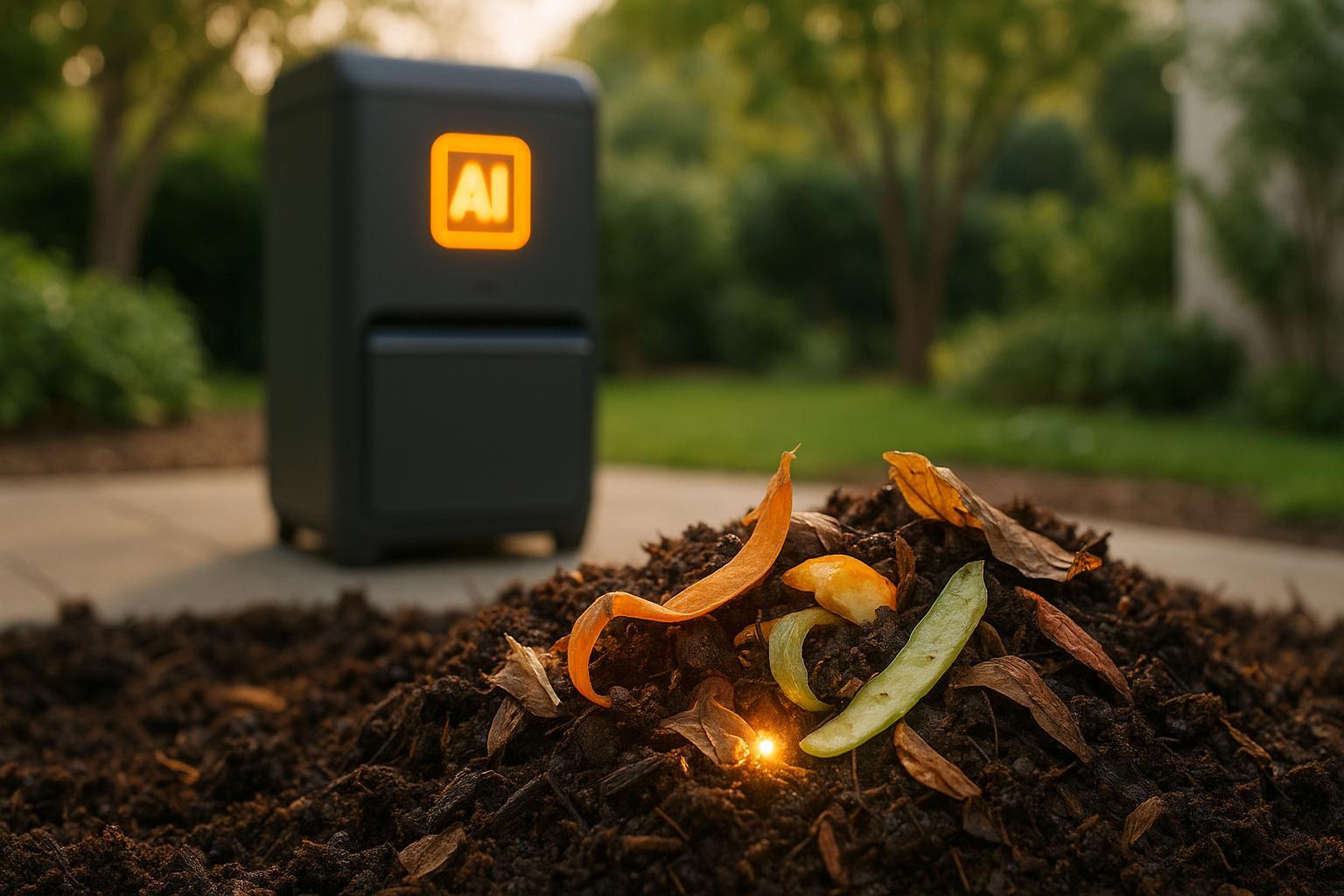
AI Composting: How It Works
Explore how AI composting enhances efficiency, reduces emissions, and transforms organic waste into high-quality compost through advanced technology.
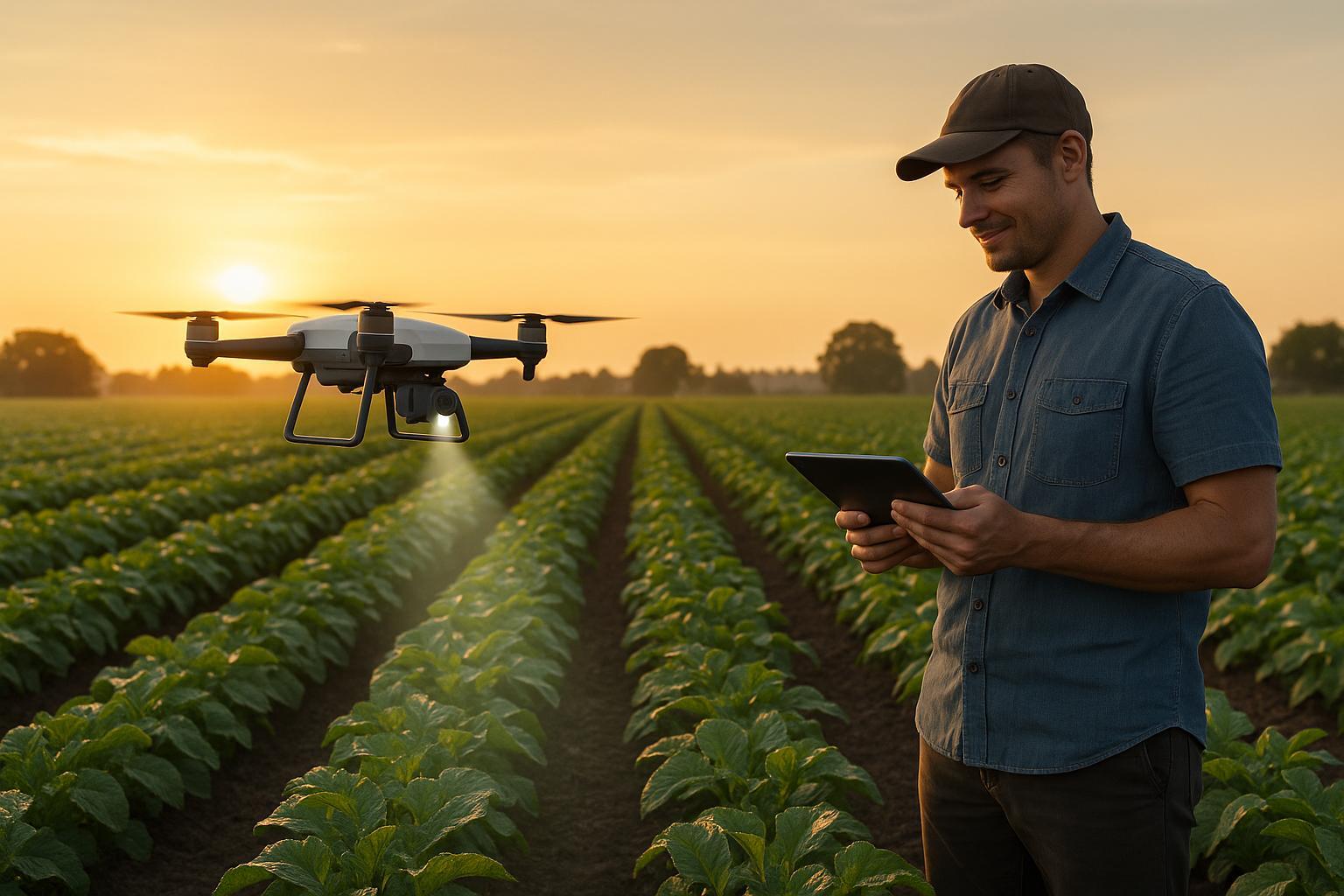
AI Pest Detection vs. Traditional Methods
Explore how AI pest detection outperforms traditional methods, enhancing crop health and sustainability while reducing chemical usage.

How AI Apps Detect Garden Pests in Real Time
AI apps revolutionize pest management by providing instant identification and tailored solutions for garden pests, enhancing plant protection.
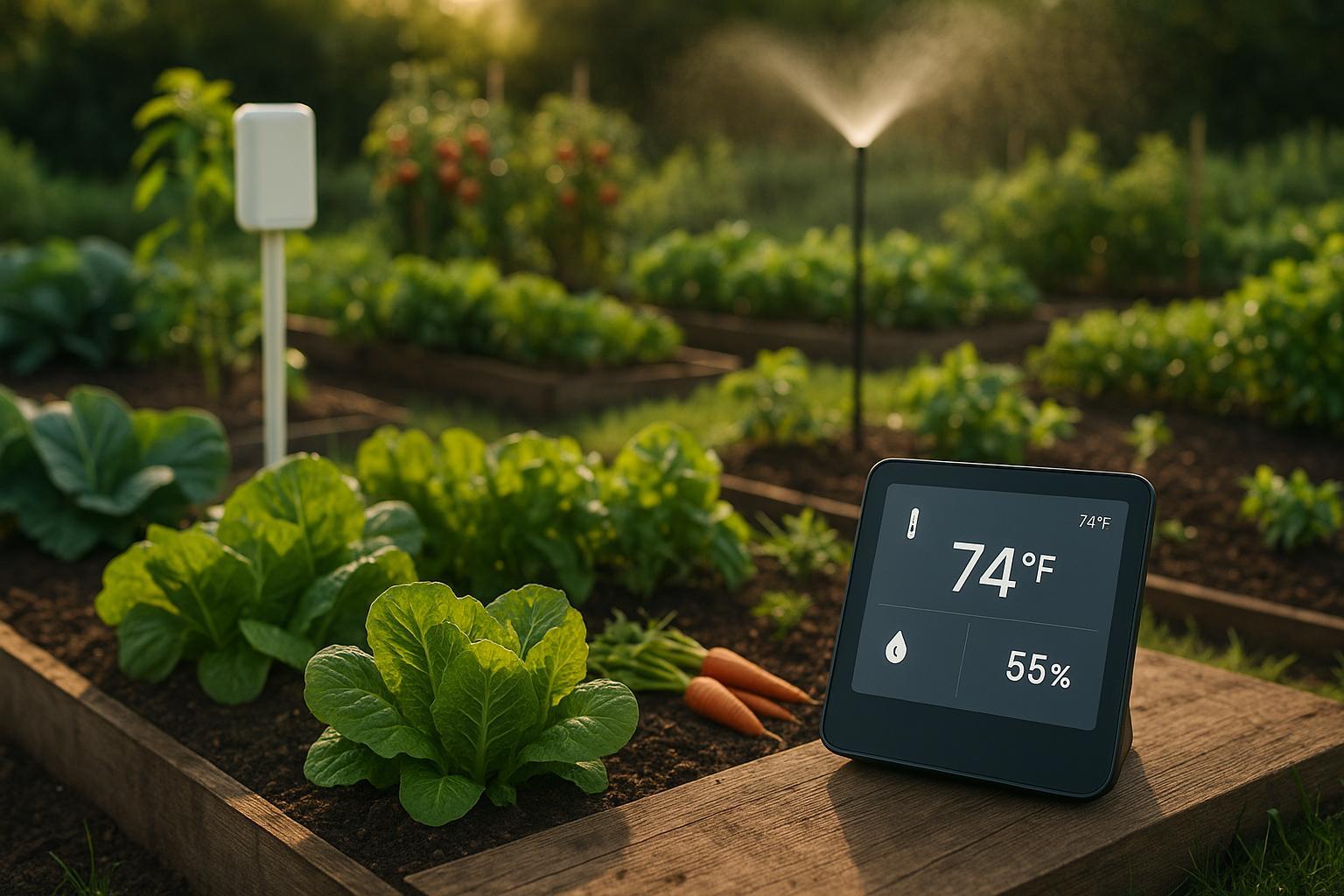
How Remote Climate Control Boosts Garden Productivity
Explore how remote climate control systems enhance garden productivity through automation, yielding higher returns and resource efficiency.
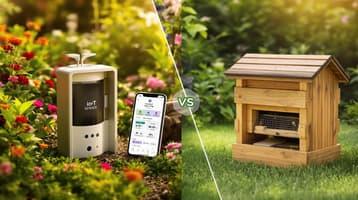
IoT vs. Traditional Pest Monitoring Systems
Explore the efficiency and accuracy of IoT pest monitoring systems compared to traditional methods, and discover which is best for your garden.
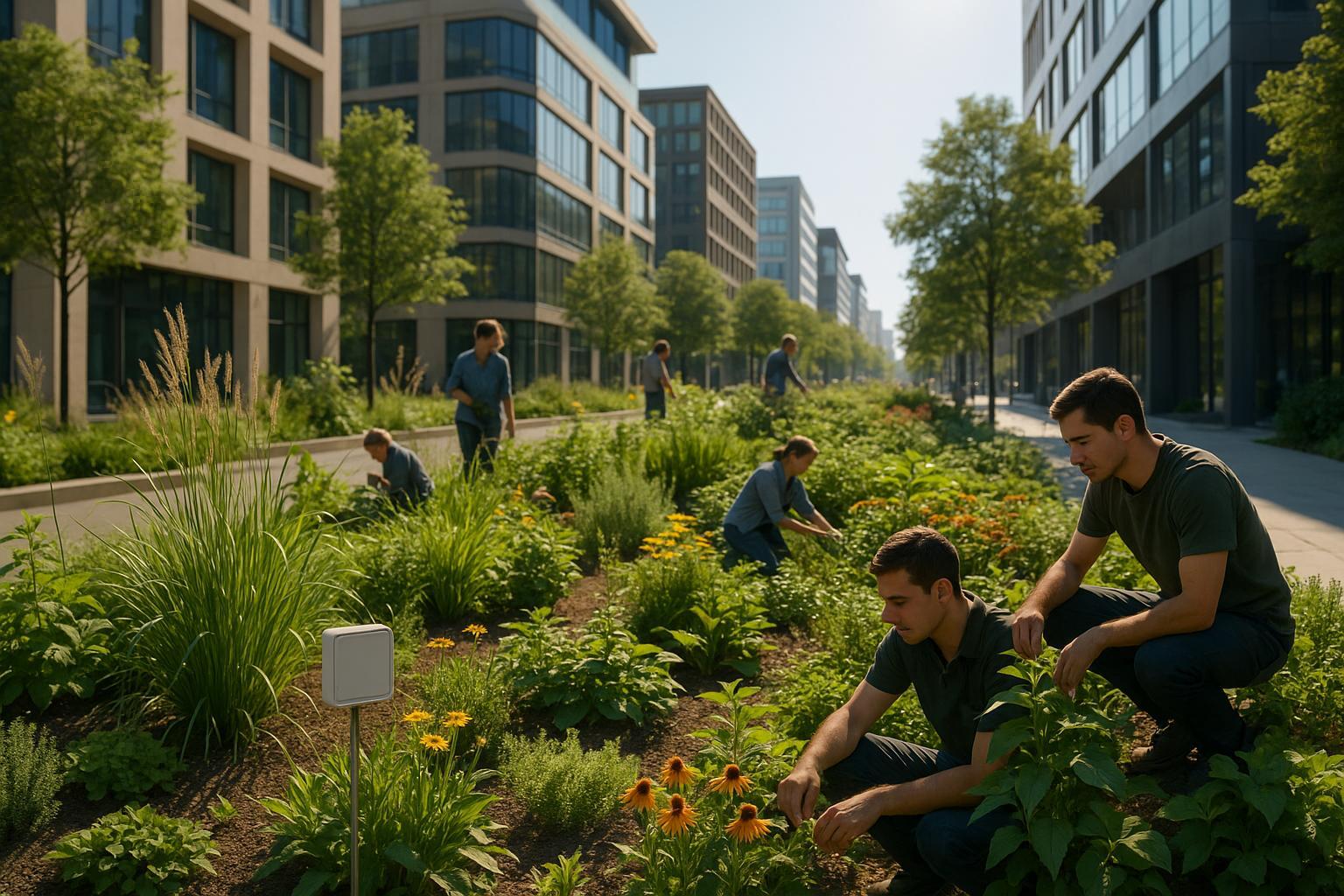
AI Climate Analysis for Urban Planting Success
AI is revolutionizing urban planting with precise climate analysis, optimizing resources, and enhancing sustainability while addressing traditional method limitations.